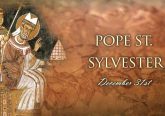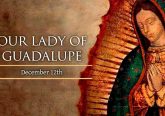August 16:Saint Stephen of Hungary
On Aug. 16, the Catholic Church celebrates the feast day of King Saint Stephen of Hungary, the monarch who led his country to embrace the Christian faith during the 11th century.
Before the future saint’s birth in 975, his mother, the duchess Sarolt, is said to have received a vision in which the original Saint Stephen – the Church’s first martyr – appeared telling her she would bear a son who would evangelize their land.
Together with her husband, the Hungarian duke Geza, Sarolt is believed to have been converted and baptized by the bishop Saint Adalbert of Prague. The same saint baptized their son Vaik in 985, giving him the name of Stephen.
Geza had desired to convert the Hungarians to the Catholic faith, a passion shared by Stephen once he reached adulthood and succeeded him in power. After conclusively defeating an alliance of rival pagan nobility, he used their acquired wealth to build a monastery, and invited clergy to convert the people.
Stephen established laws favoring Christianity over paganism, and sent an emissary to Rome with a request for the Pope to proclaim him as king. Pope Sylvester II accepted the request, sending him a crown and a gold processional cross, while also giving Stephen certain religious privileges.
He showed great diligence as king, while devoting the rest of his time to his religious duties – including charity toward the poor and sick, as well as the worship of God – and to his household. Gisela, Stephen’s wife, was the sister of the ruler later canonized as the Holy Roman Emperor Saint Henry II.
Greatly devoted to the Virgin Mary, Stephen had several churches built in her honor both in Hungary and outside the kingdom. Her intercession is credited with preventing a war between Hungary and the Holy Roman Empire under Conrad II, and stopping an assassination plot against Stephen himself.
The Hungarian king also established a monastery in Jerusalem, and set up institutions to aid pilgrims in other major cities. Stephen counted saints among his friends and correspondents, and fulfilled the Pope’s charge to use his royal authority for the good of the Church.
Suffering came to the king, however, when only one of his children survived to adulthood. Stephen’s only living son Emeric received a strong Catholic upbringing, and was expected to succeed his father. But Emeric died before Stephen, after a hunting accident in 1031.
Emeric was later canonized as a saint in his own right, and Stephen eventually came to rejoice that his son had been permitted to enter God’s presence before him. The king’s final years, however, were marked by illness as well as a succession dispute among his relatives.
In 1038, on the feast of the Assumption of the Virgin Mary, Stephen delivered his final words to leaders of the Church and state, telling them to protect and spread the Catholic faith.
To the Virgin Mary, the king directed one of his final prayers: “To thee, O Queen of heaven, and to thy guardianship, I commend the holy Church, all the bishops and the clergy, the whole kingdom, its rulers and inhabitants; but before all, I commend my soul to thy care.”
St. Stephen of Hungary died on Aug. 15, 1038. He was buried alongside his son St. Emeric, and the two were canonized together in 1083.













